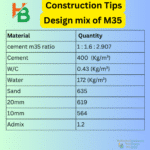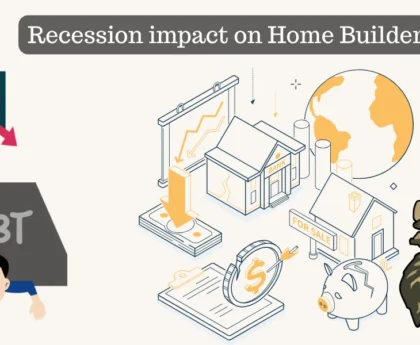What are Concrete Blocks?
Table of Contents
Toggle- What are Concrete Blocks?
- What are Solid Concrete Blocks:
- advantages of Solid Concrete Blocks :
- Disadvantages of Solid Concrete Blocks:
- Solid Concrete Blocks Sizes:
- Used In:
- Hollow Concrete Blocks:
- Advantages of Hollow Concrete Blocks:
- Disadvantages of Hollow Concrete Blocks:
- Hollow Concrete Blocks sizes:
- Used In:
- Light weight Aerated Concrete Blocks:
- Advantages Light weight Aerated Concrete Blocks
- Disadvantages of Light weight Aerated Concrete Blocks:
- Light weight Aerated Concrete Blocks Sizes:
- Used In:
- Cellular Lightweight Concrete Blocks:
- Pros:
- Cons:
- Typical Sizes Available:
- Best Use:
- Fly Ash Blocks:
- Pros:
- Cons:
- Typical Sizes Available:
- Best Use:
- Types of solid blocks and hollow blocks
As the name suggests, a concrete block is made of concrete, wherein the composition includes sand, cement, water, and gravel. These elements are staggered in layers, with cement in between, to create solid concrete walls. Concrete blocks come in various types, such as solid and hollow, each serving specific construction needs. It’s worth noting that different countries and regions have various names for these blocks. For instance, they are commonly known as cinder blocks in North America and breeze blocks in Britain.
What are Solid Concrete Blocks:
Solid concrete blocks, characterized by their heavyweight and robust nature, find applications in force-bearing walls. Larger than traditional bricks, they expedite the masonry process, making construction less time-consuming. Despite being labeled as ‘solid,’ they boast about 25 percent open holes, differentiating them from fully solid structures.
advantages of Solid Concrete Blocks :
- Impressive compressive strength (5 – 8 Mpa), surpassing alternatives.
- Economical production at the site, eliminating transportation costs.
- Low water absorption, setting them apart in their class.
Disadvantages of Solid Concrete Blocks:
- High density (2100 to 2200 kg/cum), contributing to a heavy dead load.
- Dimensional variations may be observed.
- Labor-intensive chiseling required for service installations.
Solid Concrete Blocks Sizes:
400x200x200mm (15.75×7.87×7.87 inches), 400x200x150mm (15.75×7.87×5.91 inches), 400x200x100mm (15.75×7.87×3.94 inches)
Used In:
Low-rise construction projects
Hollow Concrete Blocks:
With more than 25 percent open holes, hollow concrete blocks, available in half and full sizes, streamline construction processes and reduce costs.
Advantages of Hollow Concrete Blocks:
- Moderate compressive strength (5 – 8 Mpa).
- Lightweight nature (density = 1250 to 1400 kg/cum), minimizing dead loads.
- On-site manufacturing for cost-effective production.
Disadvantages of Hollow Concrete Blocks:
- Services installation may require concrete filling post-chiseling.
- Potential wastage in the process.
Hollow Concrete Blocks sizes:
400x200x200mm (15.75×7.87×7.87 inches), 400x200x150mm (15.75×7.87×5.91 inches), 400x200x100mm (15.75×7.87×3.94 inches)
Used In:
Low-rise construction projects
Concrete Block Prices in India: In India, the price of a concrete block can range between Rs 30-50, depending on the size and type of block being purchased. It’s essential for buyers to consider these factors when planning construction projects, ensuring both quality and cost-effectiveness.
Aerated Concrete Blocks: Aerated concrete blocks are characterized by their lightweight nature, making them an ideal choice for high-rise constructions. Here are the pros and cons:
Pros:
- Lightweight (density = 600 – 700 kg/cum), easy to handle.
- Reduction in dead load on the structure optimizes reinforcement consumption.
- Chiselling for services (Electrical and Plumbing) installation is less labor-intensive and time-consuming.
- High dimension accuracy.
- Improved thermal and acoustic properties.
- Low plaster consumption.
Cons:
- Compressive strength ranges from 3 – 5MPa.
- Requires careful handling to minimize breakages.
- Cannot be manufactured on-site.
- Unit cost is relatively high.
Typical Sizes Available:
- 600x200x200mm (23.62×7.87×7.87 inches)
- 600x200x150mm (23.62×7.87×5.91 inches)
- 600x200x100mm (23.62×7.87×3.94 inches)
Used In:
- High-rise construction
Light weight Aerated Concrete Blocks:
Aerated concrete blocks are characterized by their lightweight nature, making them an ideal choice for high-rise constructions.
Advantages Light weight Aerated Concrete Blocks
- Lightweight (density = 600 – 700 kg/cum), easy to handle.
- Reduction in dead load on the structure optimizes reinforcement consumption.
- Chiselling for services (Electrical and Plumbing) installation is less labor-intensive and time-consuming.
- High dimension accuracy.
- Improved thermal and acoustic properties.
- Low plaster consumption.
Disadvantages of Light weight Aerated Concrete Blocks:
- Compressive strength ranges from 3 – 5MPa.
- Requires careful handling to minimize breakages.
- Cannot be manufactured on-site.
- Unit cost is relatively high.
Light weight Aerated Concrete Blocks Sizes:
600x200x200mm (23.62×7.87×7.87 inches), 600x200x150mm (23.62×7.87×5.91 inches), 600x200x100mm (23.62×7.87×3.94 inches)
Used In:
High-rise construction
Cellular Lightweight Concrete Blocks:
Cellular lightweight concrete blocks offer advantages suitable for high-rise construction.
Pros:
- Lightweight (density = 550 to 650 kg/cum), reducing the dead load on the structure.
- High dimension accuracy.
- Chiselling for services (Electrical and Plumbing) installation is less labor-intensive and time-consuming.
- Enhanced thermal and acoustic properties.
- On-site manufacturing for economical production (no transportation, taxes).
- Low plaster consumption.
Cons:
- Compressive strength ranges from 3 – 4MPa, relatively lower than some substitutes.
- Requires better quality control during production.
- Proper handling to prevent breakages.
Typical Sizes Available:
600x200x200mm (23.62×7.87×7.87 inches), 600x200x150mm (23.62×7.87×5.91 inches), 600x200x100mm (23.62×7.87×3.94 inches)
Best Use:
High-rise construction
Fly Ash Blocks:
Fly ash blocks are suitable for low and mid-rise constructions.
Pros:
- Compressive strength ranges from 3.5 – 5MPa.
- Can be manufactured on-site for economical production.
- Chiselling for services (Electrical and Plumbing) installation is less labor-intensive and time-consuming.
Cons:
- High density (2100 to 2200 kg/cum).
- Dimensional variations observed.
- High plaster consumption.
Typical Sizes Available:
600x200x200mm (23.62×7.87×7.87 inches), 600x200x150mm (23.62×7.87×5.91 inches), 600x200x100mm (23.62×7.87×3.94 inches)
400x200x200mm (15.75×7.87×7.87 inches), 400x200x150mm (15.75×7.87×5.91 inches), 400x200x100mm (15.75×7.87×3.94 inches)
Best Use:
Low and mid-rise construction
Types of solid blocks and hollow blocks
| Solid Concrete Blocks | Hollow Concrete Blocks |
|---|---|
| Fly Ash Blocks | Concrete Stretcher Blocks |
| Light Aerated Concrete Blocks | Lintel Blocks |
| Paving Concrete Blocks | Partition Concrete Blocks |
| Jamb Concrete Blocks | Bullnose Concrete Blocks |
| Cellular-Lightweight Concrete Blocks | Concrete Corner Blocks |





